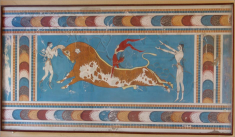Speaker
Description
The Solenoidal Tracker at RHIC (STAR) detector has excellent tracking and particle identification capabilities, as well as an electromagnetic calorimeter of fine granularity at mid-rapidity, which makes STAR a unique experiment to study the emergent properties of Quantum Chromodynamics (QCD) and Quantum electrodynamics (QED). The main physics goal of the heavy-ion collisions at RHIC top energy is to confirm the formation of the strongly-interacting Quark-Gluon Plasma (QGP) and study its properties. Additionally, the STAR Beam Energy Scan Phase II (BES-II) program is aimed to search for the possible critical endpoint in the QCD phase diagram. The ultra-relativistic heavy-ion collisions are also found to be an ideal place to study QED related phenomenon such as coherent photon-nucleus and photon-photon interactions.
In this talk, we will highlight selected results from Ru+Ru and Zr+Zr collisions at RHIC top energy as well as physics results from BES-II program. The physics implications of these results will also be discussed.
Details
Qian Yang, Dr. Yang, Shandong University, China
| Is this abstract from experiment? | Yes |
|---|---|
| Name of experiment and experimental site | STAR |
| Is the speaker for that presentation defined? | Yes |
| Internet talk | Yes |
